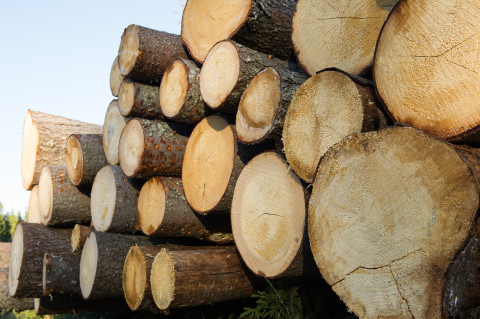Our school has a decades-long history in forest sciences. Our research is of high quality internationally, and is focused on forests, forestry, and the significance of forests in a society. It is associated with the research done on environment and renewable resources, which is one of the core strengths of our university.
Forest zones cross borders and forest industry operates globally. Forest researchers have always sought international contacts, because local forestry no longer exists. Climate change and biodiversity loss is relevant to all of us. Our research collaborations are close, and often the same problem is studied by several disciplines.
We participate in multiple projects financed by the EU, and our research and development partnerships include many companies and practical organizations. Our researchers participate in the product development of the forest sector and university-business cooperation with other natural resource sector actors.

Forest information technology covers topics ranging from applied geoinformatics to information technology (IT) -methods applied to forestry. Since geographical information system (GIS) technology is now an important part of the operational work and data management of the forest industry; understanding modern IT technology and the ability to design new GIS tools are also important parts of the work of forestry professionals.
Forest mensuration science includes mensuration, modelling, and inventory methods as well as remote sensing techniques. Forest mensuration and planning concentrates on the interrelated processes ranging from the forest inventory to the decision-making in forest management and use of forest resources. Forest planning analyses alternative forest management options using forest inventory data and models developed by forest research. A central task of planning is to predict the consequences of management alternatives, so that treatments that best fulfil the objectives of forest owners and other stakeholders are applied.
Modern forestry is multi-functional and therefore management objectives may include non-timber benefits such as amenities, biodiversity conservation, and some environmental effects possible through forestry operations. Various optimization methods can be used to schedule the best treatments for forest stands.
The research focus in forest management and ecosystem services is on how the management and utilization of forests and changing climate affect the carbon dynamics, structure of forests and different ecosystem services and various risks to forests. Forest biomass production and carbon sequestration are studied as well as how they are affected by natural disturbances such as storms, snow extremes and drought.
Research in forest soil science focuses on plant-soil interactions under changing climate. We apply field monitoring, experimental work, and modeling on peatlands and mineral soil forest in field and laboratory conditions. In forest ecology, the structure and functioning of forest ecosystems are studied, exploring patterns of forest biodiversity and the interaction animal, plant, and fungal species. Research on forest ecology covers population and community ecology, the ecological patterns and dynamics of forest ecosystems and issues relating to conservation of forest biodiversity.
Forest health research focuses on the impacts of forest disturbances, forest microbiota and animals, and climate change to forest yield, productivity and quality of wood and non-wood products as well as ecosystem services, and on how harmful impacts can be alleviated. Many of the questions addressed in research on forest management, ecology and health are global, and both experimental studies and modelling of forest ecosystems are performed.
Forest economics research focuses on economic production and consumption of forest-related services. Forest economics covers also multiple-use of forests and multi-objective forest planning, co-creation in forestry decision-making, and economic and social analyses of the forestry sector. Business management science analyses the competitiveness and intellectual capital of forest-related businesses and organizations. Forest policy studies at School of Forest Sciences have a broad focus on decision making and societal governance processes, in scales from a single forest owner to international forest policies. We are interested in societal structures enhancing – and from the other hand inhibiting – the change toward circular bioeconomy. We are studying impacts of past forest policies and potentials of new policy instruments. Topics of our studies include, for example, learning and education in bioeconomy, forest discourses, ecosystem services, and decision support methodologies enhancing pluralistic decision making.
Forest bioeconomy foresight contemplates change of phenomena around forest usage. The research focuses on the evolving operating environment of enterprises, the public sector, and the civil society. Of interest are subtle and radical changes of forest bioeconomy as part of systemic societal transformation towards carbon-negative circular bioeconomy. We use horizon scanning, explorative modelling of alternative futures, and scenario-driven futures images. Foresight research gathers stakeholders to create and assess futures paths collaboratively, aiming at insight and improved futures thinking.
Wood science focuses on timber and various effects affecting the quality of the physical and anatomical qualities of wood. Wood materials science creates a link between wood and the refined consumer products such as bio-based materials, chemicals and energy derived from it. The properties, performance and versatility of available raw material resources is the basis for our research on which mechanical, chemical and biological conversion is being developed. We have international research collaboration on wood materials with universities, research institutes and forest-based industry.
Wood procurement is the most important object of teaching and research in forest technology. The forest industry organizes the wood procurement of mills, taking into account its production process and the factors of the final product for the customer. Its bottlenecks include delivery volumes, productivity, environmental sustainability, costs, labor, seasonality, transportation infrastructure, ERP systems, energy efficiency and wood purchasing.
Research and education concerning bioenergy systems entails the sustainable production of lignocellulosic biomass, its efficient transportation and logistics until its final utilization for the production of energy. The research lines address, among others, the management of biomass production systems, including its ecological, environmental and economic dimensions, and the development and evolution of bioenergy markets and policy both at national and international level.
